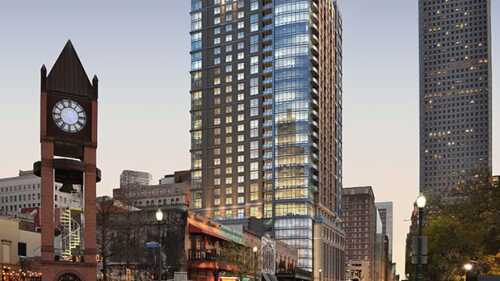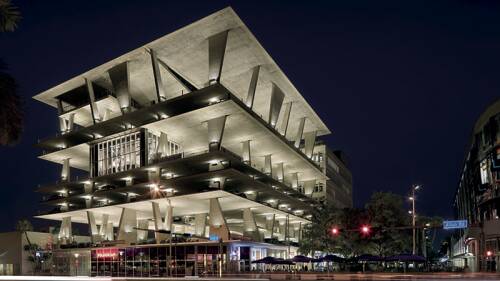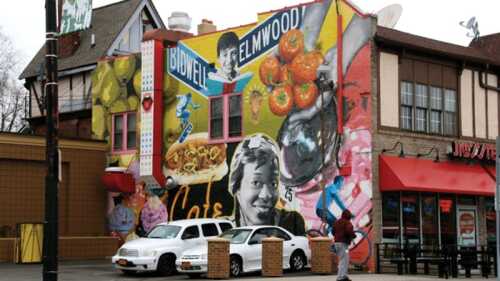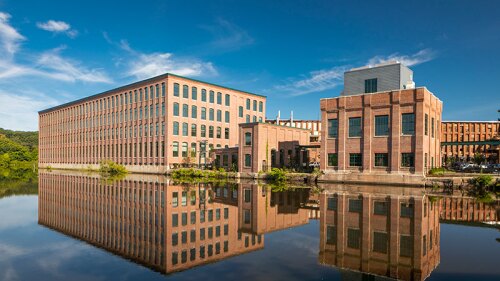Property Types
Hotels and Resorts
The Commercial Mortgage Alert Trepp weekly survey of 15 active portfolio lenders narrowed significantly (17 basis points on average) with multifamily spreads breaking the 200 basis point barrier between sanity and complete madness. Less than 200 over the 10-year curve seems a little too low a spread to compensate for the risks associated with making a loan secured by an operating business. During the period, 10-year Treasury bond yields were flat, with average all-in cost equal to 4.66 percent.
The Commercial Mortgage Alert Trepp weekly survey of 15 active portfolio lenders was mixed with some widening and some narrowing between October 22nd and October 29th. During the period, 10-year Treasury bond yields came in 5 basis points, with average all-in cost equal to 4.83 percent.
The Commercial Mortgage Alert Trepp weekly survey of 15 active portfolio lenders was mixed with some widening and some narrowing between October 15th and October 22nd. During the period, 10-year Treasury bond yields widened 5 basis points, with average all-in cost equal to equal to 4.89 percent.
Industrial
The Commercial Mortgage Alert Trepp weekly survey of 15 active portfolio lenders was unchanged between September 17th and September 24th. During the period, 10-year Treasury bond yields declined 9 basis points, with average all-in cost equal to equal to 4.80 percent.
The Commercial Mortgage Alert Trepp weekly survey of 15 active portfolio lenders trended higher with average spreads up 8 basis points (0.08 percent) between September 3rd and September 17th. During the period, 10-year Treasury bond yields declined 14 basis points, with average all-in cost equal to equal to 4.89 percent.
The Commercial Mortgage Alert Trepp weekly survey of 15 active portfolio lenders continued to trend lower with average spreads down 5 basis points (0.05 percent) between September 3 and September 10. During the period, 10-year Treasury bond yields increased 4 basis points, with average all-in cost equal to equal to 4.95 percent.
Mixed-Use
As the only major U.S. city without formal zoning, Houston has a reputation as a freewheeling place where anything goes. But in truth, a complex patchwork of public and private regulation has evolved to impose order.
Better described now as a mixed-use building than a garage, 1111 Lincoln Road provides a gateway to the Lincoln Road pedestrian mall conceived by Morris Lapidus, the influential 1950s Miami Beach architect.
Neighborhoods with small-scale historic buildings can be economic and cultural powerhouses when given a chance to survive and evolve.
Multifamily
Ten multifamily residential developments capitalize on waterfront locations.
Multifamily housing experts have seen financial and energy savings, plus improved resident retention, from their efforts in sustainability, health, and reduced energy use.
Eight years after a ULI Advisory Services panel gathered in the shadow of Pikes Peak to brainstorm about revitalizing Colorado Springs, the recent opening of the $91 million U.S. Olympic & Paralympic Museum in the southwest corner of downtown represents an important cornerstone of the city’s urban renewal effort while bolstering its identity as “Olympic City, USA.”
Office
The workplace of the future needs to provide flexibility and wellness in order to drive innovation, said a design expert giving a keynote at the 2018 ULI Japan Fall Conference in Tokyo.
The overall availability rate for U.S. office space was unchanged as of the end of the third quarter of 2018, remaining at 18.1 percent, according to the latest Savills Studley Report: National Office Sector from commercial services firm Savills Studley. San Francisco remains the tightest market in the country, with an availability rate of 9 percent, followed by Boston/Suffolk County, 9.7 percent; New York City, 11.6 percent; and Austin, 12.8 percent.
While America’s South continues on a steady course with a growing population and an increasing number of jobs, officials are acting on some challenges, which include traffic, housing affordability, education needs, and the rising cost of construction.
Residental
National rents have barely moved through the entire peak rental season and into September, according to data from Yardi Matrix, marking the longest period of stagnation in recent history—four consecutive months. Coming in at $1,354 for the month of September, the average rent is only 2.2 percent higher than this time last year.
The lack of affordable housing for the growing senior population in the United States is a looming crisis and deserves more attention and resources from both the private sector and government, according to a leading advocate for aging issues. But affordable senior housing can become a platform for integrating services for low-income seniors and be an economic driver in communities by more efficiently delivering health care and other long-term support.
State governments, in partnership with cities and other local jurisdictions, can and should do more to promote housing development and choice through smarter local land use policies and incentives, according to a new ULI report.
Retail
For decades, civic leaders have tried to revitalize Market Street, San Francisco’s central thoroughfare, only to see their efforts founder. “I sometimes call it the great white whale of San Francisco,” says Eric Tao, managing partner at L37 Development in San Francisco and co-chair of ULI San Francisco. “Every new mayor, every new planning director, every new economic development director has chased that white whale.” This year, however, an international competition of ideas hosted and run by ULI San Francisco, with support from the ULI Foundation, generated fresh momentum for reimagining the boulevard. The competition drew 173 submissions from nine countries and sparked new conversations about the future of downtown San Francisco.
The OAK project began in 2009, when a development firm set their sights on the corner of Northwest Expressway and North Pennsylvania Avenue, the state’s most important and busiest retail intersection. As the region’s only parcel capable of supporting a vertically integrated project of this scale and density, that land represented an opportunity to create something truly special.
As aging retail continue to evolve, one increasingly popular trend has been to redesign malls as town centers—recalling a time when such commercial districts were the heart and soul of a community. Mall–to–town center retrofits are emerging throughout the nation, especially in suburban communities, where pedestrian-friendly, mixed-use environments are highly attractive to millennials now raising families.













